
What is a Goshuin? All About Traditional Japanese Shrine Seals (and why you'll be addicted to collecting them!)
- Written by: Lucio Maurizi
Goshuin are large stamps, handwritten by monks, that work as a kind of proof that you have visited a specific temple or shrine. Simple in concept, this document is full of symbolic, religious, and historical meanings.
Many people are fascinated by kanji (Chinese characters adopted and adapted by the Japanese language). Sometimes it’s their shape that intrigues even those who don’t understand their meaning.
Often, their appeal is the power they intrinsically carry beyond the word or concept they express. Shodo, the art of calligraphy in Japan has also been associated, for a time, to the art of sword-wielding, inferring to the many styles masters could use, as well as their propensity to use quick or slow strokes, wide or narrow movements, and so on.
In this article:
・Background
・What is a Goshuin and where do I get one?
・Origins and History
・How to find Goshuin at each shrine
・Types of Goshuin-cho
・Etiquette
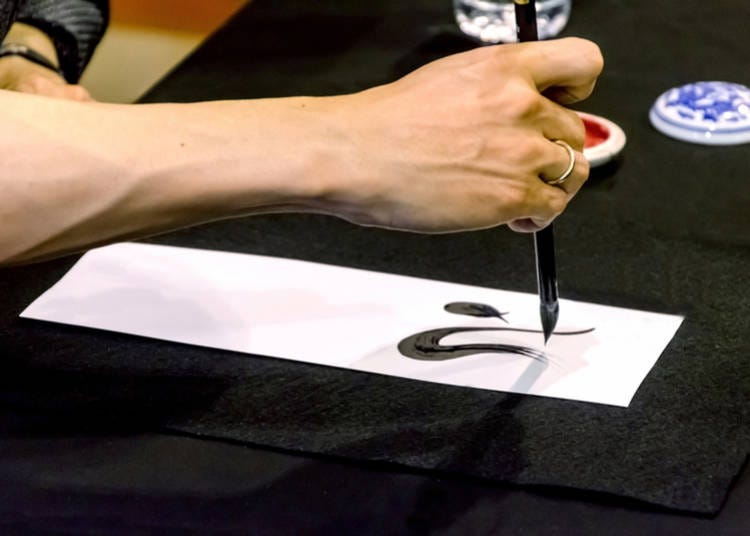
Undeniably, though, what is most associated with kanji writing for Japanese people and foreigners alike, is a sense of spirituality that seems to be embedded with the characters themselves, regardless of whether such kanji actually have a mystical connotation.
This is probably the reason behind hosts of people choosing to synthesize their entire life or belief system with a kanji tattoo (although, often, poor research on the part of the person wearing the tattoo leads to undesirable effects).

Many westerners like to see “their name” written in kanji simply because having something written in kanji, even though one might not understand its meaning, makes for a really great memento.
Similarly, the popularity of goshuin grew among foreigners and Japanese people as well. So let’s dive in, and let’s make sure you know everything there is to know about these ancient seals.
What is a goshuin and where do I get one?
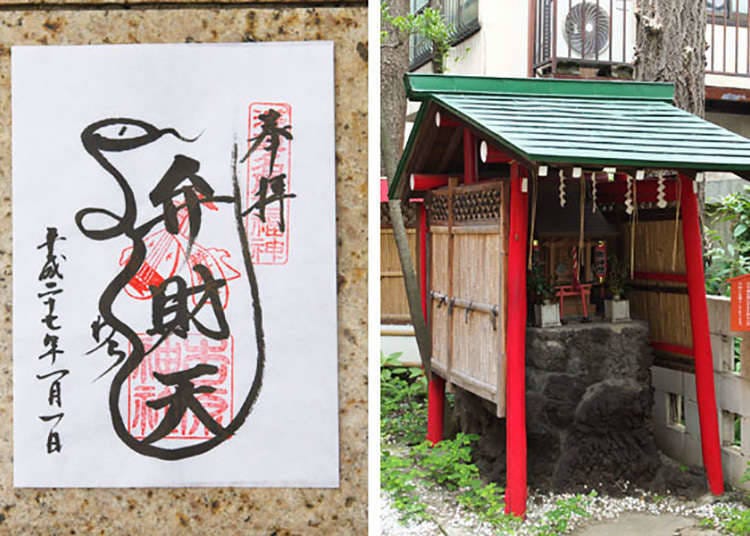
As mentioned earlier, goshuin are hand-written seals that you can obtain from many temples and shrines across Japan, but not from all. The places where you can usually find goshuin are Buddhist temples and Shinto shrines. However, it’s important to note that these very large religions (or philosophies) have several different branches.
In fact, some sects, like the Jodo Shinshu (Buddhist “School of the Pure Land”), do not offer goshuin to visitors. Nevertheless, more often than not, you’ll be able to find a stand where the shuin is prepared, upon request.
The goshuin can be easily confused with the more common and less tradition-charged tourist stamps, so it’s worth looking at both. Japan has a very close relation to stamps. Whereas in most countries, a signature on a document validates it, in Japan, personal stamps are overwhelmingly used for the same purpose.
At the same time, a stamp is also a printed memento that is easily collectible in virtually every place in the country: train stations, tourist landmarks, stores, and, of course, temples and shrines. A stamp will present something connecting it to the place you visited, in the shape of images and words.
You can get the book itself (goshuincho) for around 1,000 yen at most larger temples, and the stamps from then on will cost somewhere under 500 yen.
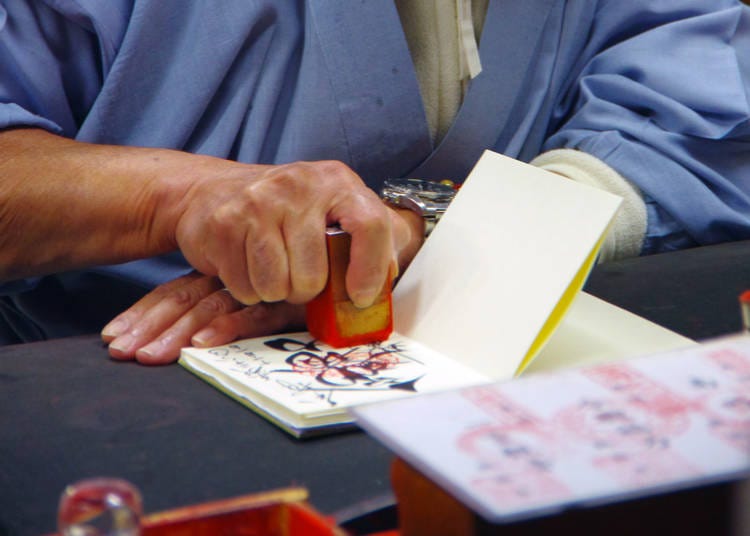
The goshuin, at glance, might look like a convoluted stamp, but it is vastly different from its “tourist memento” counterpart.
If you decide to collect also tourist stamps, along with goshuin, remember that you should keep them in separate books. The goshuincho is meant to hold only sacred seals.
It’s not uncommon for those who prepare the goshuin to flip through the pages to make sure they write their seal on the right one, and if they see something other than a goshuin on your book you might be lectured on the sacredness of the goshuincho, or even be denied a new seal.
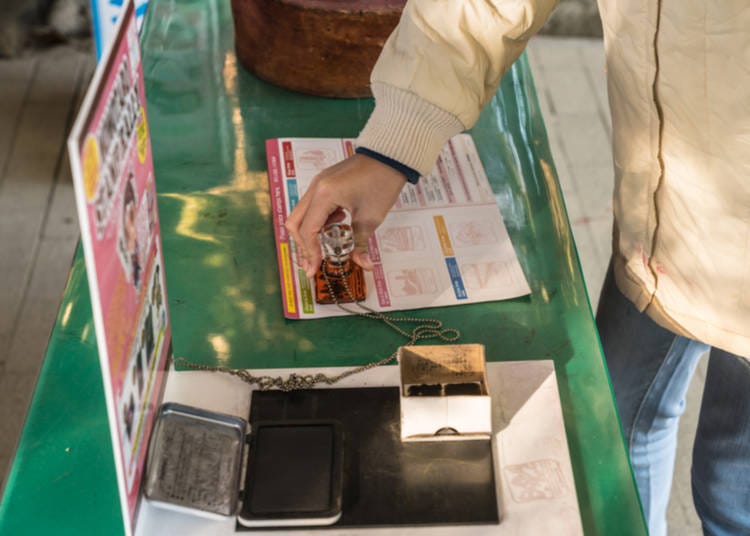
These seals are unique in that they are handwritten and, usually, made by Buddhist monks or Shinto kannushi (lit. God master). The kannushi are the people responsible for the maintenance of the Shinto shrine, as well as for leading the worshiping of the god.
In the past, they were considered the intermediaries between “common” people and the god. In other words, you’re receiving the seal from what is considered, by believers, an emissary of Kamisama. It’s pretty exciting when compared to a self-placed stamp.
Although the procedure to create a goshuin is the same everywhere, each temple or shrine has a different goshuin and a different style. At first, the monk (or kannushi) will carve the temple's symbol in the book. He will then inscribe the name of the temple, as well as the date of your visit.
They may also add prayers, or symbols for which the location is known. Some locations offer multiple goshuin. You can choose the one you’d like, or you could have them all added to your collection.
Why is the goshuin so ritualistic? Origin and history

Unfortunately, like many other traditional customs of Japan, tracing the origin of the goshuin back to its inception is not an easy task. For this reason, we still can’t know for sure where it originated or even why, but many sources point in the same direction, and the most widely accepted theory is that they used to be just what they are now.
Devout people in many areas of Japan would embark on what was (and still is) called junrei. This word refers to a pilgrimage visiting several Buddhist and Shinto temples and shrines (usually 33, 66, or 88), dating as far back as the Nara Period (710-794). Pilgrims would travel to worship places and receive a goshuin, which proved they had been there.
But that was not all. Originally, the goshuin was given in exchange for a shakyo (sutra). The shakyo was a means to spread Buddha’s word while simultaneously praying for one’s greatest wish. The shakyo was believed to be a mirror of one’s self. They were written by hand, brief and beautiful in nature; they were considered a symbol of one’s piety.
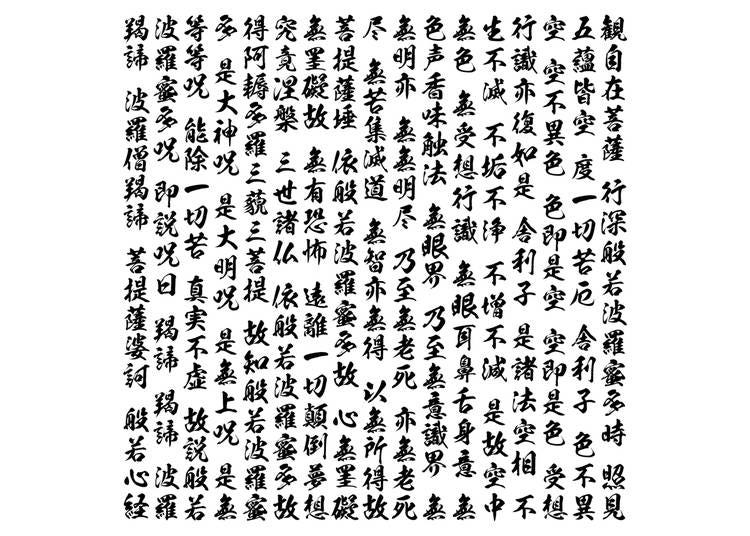
Donating the sutra to the temple or shrine, pilgrims demonstrated how devout they were, and received something to remind themselves and show others that their positive nature had been acknowledged by many sacred places.
The transition of goshuin into modern times
Many people still collect goshuin for the same reasons pilgrims in the past did. In fact, a lot of pilgrims still visit several locations collecting seals. For a long time, until relatively recently, goshuin were something that only devout people or the elderly would go after. Things changed considerably in the past few years. Collecting shuin has become a widespread hobby among all ages, nationalities, and faiths.
For some hard-core enthusiasts, it has become such an obsession that it gave life to an expression: “shuin girl,” referring to young adults (generally women but not exclusively) who relentlessly visit hundreds of temples and shrines and collect an impressive number of stamps to take home.
What to know and what to prepare to get your very own goshuin
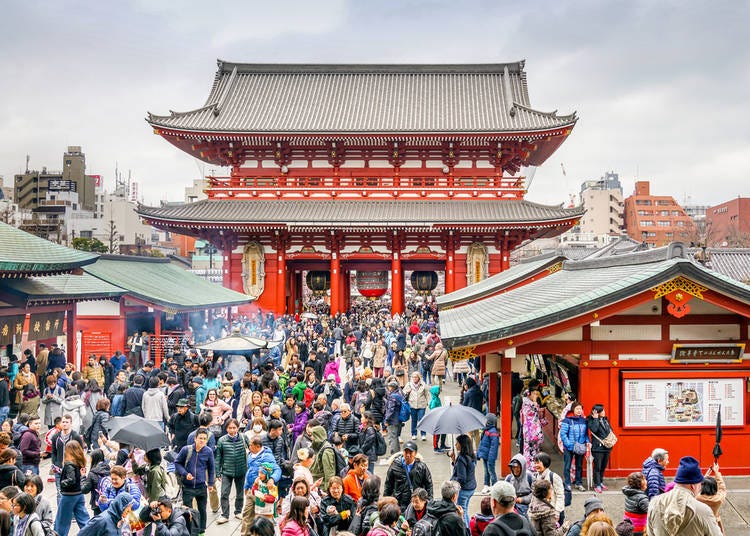
When visiting a Buddhist or Shinto temple or shrine, first make sure that they do offer goshuin (in most cases they will). The areas in which goshuin are prepared are usually marked only in Japanese, but we can help.
One way to identify the right place is by identifying the signs. Even if you can’t read kanji, Buddhist temples will always mark the right area with 御朱印所 (goshuin jo), 朱印所 (Shuin jo), or 納経所 (Nokyo jo). Shinto shrines will have a sign reading 授与所 (Juyo jo), or 社務所 (Shamu sho).
Even memorizing just the shape of these kanji can be a challenge, but it still won’t be hard to find the right place. You could approach any of the staff, or monks (or even Japanese visitors) to direct you by asking, “Goshuin wa doko de morae masuka?” (”Where can I get goshuin ?”).
You can simplify further by asking “Goshuin wa, doko?” (lit. “Goshuin, where?”). Most people would understand even a simple “Goshuin, please?” Depending on the crowd, you may be able to receive your stamp right away, or you may have to wait a few minutes, in which case you’ll be given a ticket, or a tag with a number to collect your stamp later.
If you’re in a particularly popular place, ask for your goshuin as soon as you enter, and then enjoy the rest of the visit. You’ll save a lot of time!
In the past, people would offer sutra in exchange for seals. Nowadays, most places will ask for a certain sum of money (usually between ¥300 and ¥1000 – although prices don’t often go above ¥500). In some cases, there will be no price specified. Still, it’s customary to leave an offer, called hatsuhoryou (again, usually ¥300 – probably because of the relation the number 3 has with religion, culture, folklore, and superstition in Japan).
On occasions, you may even see a sign that only asks for your good thoughts and spirit. Although not necessary, it’s customary to leave the exact amount of money when asking for a goshuin. And if it’s possible, don’t miss the chance of watching the artists at work. They are often very skilled.
We talked about the stamps, the art, the where, and how-to, but there are still some essential factors to consider, particularly how to store your stamps.
The goshuincho: a passport to the next life
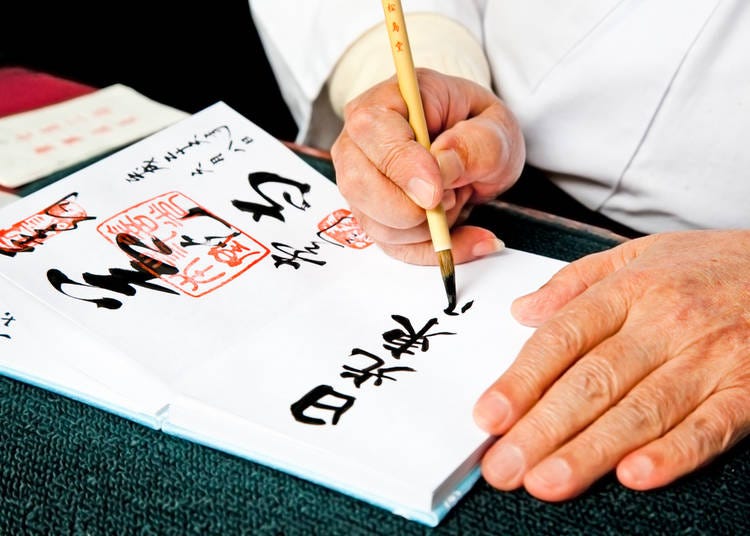
Regardless of the reason behind collecting goshuin, or one’s religious beliefs, this seal carries a very deeply rooted spiritual connotation for many devout people, and certainly for the monks and kannushi who write them. For this reason, you won’t be able to receive a goshuin unless you hand them the appropriate book: the goshuincho.
The kanji forming the word shuin (朱 and 印) literally mean respectively “red/orange ink” and “stamp.” Along with the particle “go” preceding them, goshuin could be translated into “the sacred vermillion stamp.” Chō means book.
The goshuincho is, therefore, a book designed to collect these important seals, which should not be placed just anywhere. As explained earlier, pilgrims would collect the seals as evidence of their devoutness and piety, but there was an ulterior reason. The idea was that they would carry their goshuincho to the afterlife to prove to the deity they would encounter that they had led a righteous life in the eyes of the god.
It wouldn’t be hard to find such books. Most temples carry their own version of goshuinchō, but they are relatively easy to find also in bookstores. Because of the younger generation’s interest in this practice, it is now common to find several books with many different motifs and colors, as well as more somber, elegant ones for those who would prefer that kind of design.
There are mostly two different kinds of goshuincho. One resembles a regular notebook, in shape. It has a hardcover and regular pages (although the texture is thicker and more porous). The one that is overwhelmingly used, though, is the goshuincho with the “accordion” pages. This book has pages that unfold into a unique long page showing several seals in a line.
You can choose to collect one goshuin on each side of the page, but be mindful of the fact that they are designed to carry only one per page, so, if you opt to collect more in one book, you may have to deal with ink transpiring on the back of the page and potentially ruin another seal. Depending on how you decide to use your goshuincho, you’ll generally be able to collect 20-40 seals in one book.
Although you can buy goshuincho of different sizes, the most common (and traditional) one is 11cm x 16 cm.
Some people today use different books to separate seals from temples and those from shrines. It’s hard to understand where and why this practice first started taking place, but what is certain is that in origin, there was no such distinction. Ultimately it’s up to you.
Ultimately, regardless of one’s beliefs or motivation behind collecting these stamps, it’s always important to understand and respect the culture that created them.
Goshuin etiquette: Some more useful things to remember
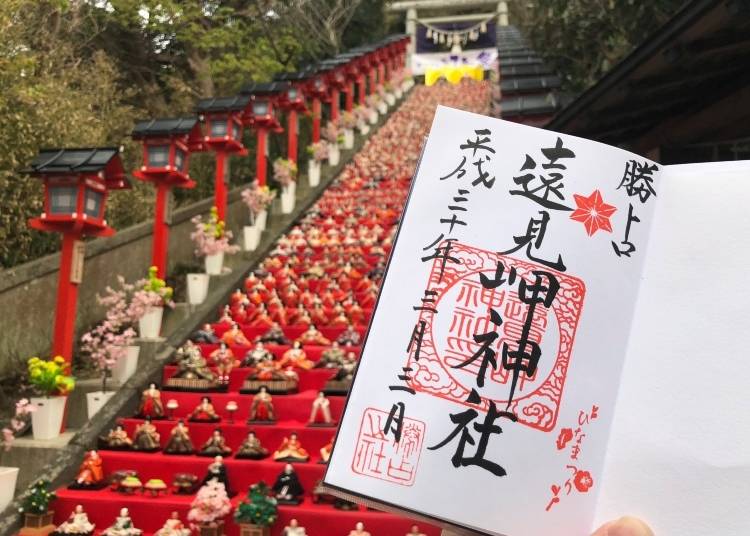
A goshuincho and the stamps in it are proof of one’s visit to the temple. For this reason, they usually don’t make for good presents. While many people may not know the intrinsic meaning of the book, many Japanese or devout people (or simply those passionate about Japanese culture and customs) may find your well-meaning souvenir inappropriate or even downright offensive.
Nowadays, you’re not required to, but in the past, you could receive a goshuin only after praying. If you want to experience the full tradition and meaning behind earning a sacred seal (or maybe to impress some bystanders and monks), you could ask where and when the next worshipping service will take place.
If you’re patient, by the time you fill your goshuincho, you’ll have a truly memorable and unique souvenir of your trip to Japan. Great designs, and if you like kanji, amazing calligraphy. In many cases, shodo is what attracts many Japanese collectors to this hobby.
What’s important to remember, though, is that the goshuin, while generally beautiful to look at, is a symbol of a much deeper relationship between the book itself and the owner.
It’s a tangible sign of the connection between a place and its spirituality, and the person who earned the seal. The religion, the philosophy, the tradition, and the history behind what could otherwise appear as a simple, albeit beautiful memento, is what makes the goshuin a priceless item and the banner of an entire faith.
Lucio Maurizi is an automotive expert specializing in Japan's car scene and auto-tourism. With an MA in East Asian History from La Sapienza Università di Roma, he's a multi-talented contributor to travel platforms like LIVE JAPAN, Japan Travel, and GPlus Media. His Instagram account (50k+ followers) offers insider views on Japan's automotive culture. Lucio also actively collaborates with professional drivers and influencers and organizes can't-miss car events in Tokyo.
- Area
- Category
*Prices and options mentioned are subject to change.
*Unless stated otherwise, all prices include tax.
Popular Tours & Activitiess
-

Fine Dining on Rails? Japan Announces Stunning NEW 'Laview' Restaurant Train
-

10 Must-Buy Cosmetics at Don Quijote (2025 Edition)
-

The Ultimate Guide to Mitsui Outlet Parks in Japan (2025 Edition) - Popular Tax-Free Malls & Coupon Info for Travelers
-
Ad

Okinawa Travel Troubles? Guide to the MCC Hotline for Illness and Weather Emergencies
-

A Don Quijote Like No Other: Step Inside the All-New Tourist-Friendly Store at Shinjuku Tonanguchi Bekkan
by: Chehui Peh
-

(12% OFF KKday Coupon) Mt. Fuji Autumn Leaves, Powder Snow & More! 15 Best Tours to Experience Japan in Fall & Winter
Inspiration for Accommodations
-

Enjoy Mt. Fuji from the Comfort of Your Room! Recommended Ryokan with Mt. Fuji View
-

Stay Near the Cherry Blossoms! Hotels for Cherry Blossom Viewing in Tokyo
-

Family-Friendly Hotels with Free Shuttle to Disneyland: Convenient Access for a Magical Stay
-

Top Ranked Hakone Hotels with Mt. Fuji View: Enjoy Stunning Scenery from Your Private Space
-

Convenient Tokyo Hotels with Airport Shuttle: Ideal for Families and Heavy Luggage
-

Stunning Tokyo Tower View Hotels: Enjoy Spectacular Scenery from Your Private Space
-

Convenient Asakusa Hotels with Kitchens: Ideal for Extended Family Visits
-

Experience Luxury: Hakone's 10 Best Five-Star Accommodations
-

Enjoy Mt. Fuji Autumn Leaves! Top Hotels Near the Popular Autumn Leaves Corridor
-

Experience Hakone Fall Foliage from Your Room with Stunning Views
-

Atami 1-Day Itinerary: Exploring Japan's Castle & Hot Springs Resort Town Near Tokyo!
-

Japan's Bath Culture: Tips You Should Know!
-

Ueno Station Area Guide: Fun Ways to Explore Tokyo's Popular Destination (Area Map & Sightseeing Tips)
-

[MOVIE] Masahi Hirao’s Bonsai Performance – A Modern Take on Traditional Japanese Culture
-

10 Tokyo Cultural Experiences to Get to Know Japan First-Hand
-
Ad

(Event Report) Spark New Discoveries in Delicious Hokuriku Regional Cuisine: Meet the Next Generation of Chefs Exploring New Frontiers in Japanese Dining Culture
- #best ramen tokyo
- #what to buy in ameyoko
- #what to bring to japan
- #new years in tokyo
- #best izakaya shinjuku
- #things to do tokyo
- #japanese nail trends
- #what to do in odaiba
- #onsen tattoo friendly tokyo
- #daiso
- #best sushi ginza
- #japanese convenience store snacks
- #best yakiniku shibuya
- #japanese fashion culture
- #best japanese soft drinks



















